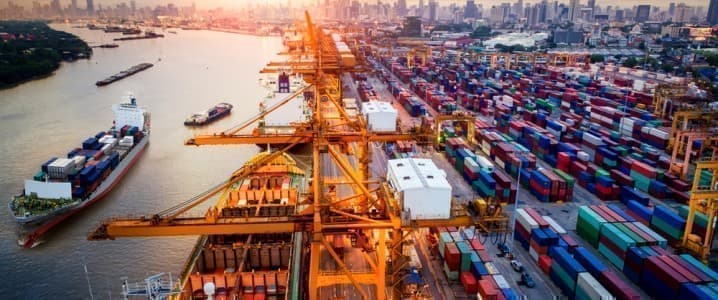Bulls are pointing to the surging metals prices as evidence a supercycle is alive and well. However, no one but a snake oil salesman would suggest that what we are seeing is anything healthy.
The 10-year commodities boom seen earlier this century, for example, was driven by rapid industrialization in China, a long-term expansion that lifted hundreds of millions out of poverty.
Energy costs drive supply constraints
But the current surge in prices is a result of energy markets driving supply-side constraints.
Apart from the chaos that is the current global energy market, it’s China’s energy crisis that is principally driving metals prices higher.
However, China is far from alone in facing an energy crisis. Multiple other clouds are gathering.
Some are short-term, such as coal and natural gas supplies.
Others are longer-term, such as explored in a Financial Times post this week.
Property market challenges in China
The precarious state of China’s property market and the longer-term push by Beijing to pivot the economy away from construction toward consumption.
The impact of China’s property market on the last supercycle and the current metals market cannot be overestimated. Even today, China’s property sector accounts for an estimated 30% of the country’s near $15 trillion economy, the Financial Times reports, Construction alone accounts for about half of China’s steel consumption.
Related: Oilfield Service Companies Can’t Catch A Break
Some metals, like copper, cobalt, nickel, and lithium, hold promise in the longer term due to rising demand from electrification. There is evidence to suggest this will simply supplant demand from a dwindling construction sector.
William Jackson, chief emerging markets economist at Capital Economics, is quoted as saying “China’s property sector is right at the end of a boom period,” which would have profound consequences for suppliers of products like iron ore, coking coal, and metals used in construction, like copper and aluminum.
The impact is not going to be uniform across the commodities sector, some metals will find alternative applications, like electrification. Commodities like agricultural products will continue to see increasing demand from a rising global population and rising living standards.
But global GDP growth will feel the effect of a smaller Chinese property sector in the years to come.
According to the IMF, China delivered 28% of all global output growth between 2013 and 2018, the Financial Times states. If China’s property sector accounted for one-third of that, the sector was responsible for more than 9% of worldwide growth worldwide over that period.
The road ahead
The current logistics and supply-side constraints, while immensely painful, will prove relatively short-lived.
We are already seeing steel prices softening. While non-ferrous metals have put in a burst of bullish gains this month, these will likely ease next year, too.
Of more profound and far-reaching impact will be a sharp retraction in China’s construction sector. That would have ramifications and undermine many sectors, such as iron ore, for the rest of the decade. It would also impact economies like Brazil, South Africa, and Australia, which are so reliant on the Chinese construction market.
By Stuart Burns via AG Metal Miner
More Top Reads From Oilprice.com:
- China’s Power Crisis Could Have A Massive Impact On Aluminum Supply
- The United States Is Not Doing Enough To Secure Critical Metals
- What To Expect From The COP26 Climate Summit



















Tesla could jump to $2 trillion in US market cap tomorrow absolutely just on sentiment alone.
Very few know or understand what an actualized deflation is as it's been 90 Years since the USA experienced one.
Not true of Japan, though.
One could argue "Western Europe" is deflating but there is zero evidence of this in fact going on with in fact the exact opposite being true ("hyperinflation.")
Anyhow high prices such as these if sustained make many enterprises that would otherwise be pure *FOLLY* indeed "economic." US Treasury Bonds did rally across the entire Yield curve which is really bad news for Wall Street and ironically enough Washington DC as that implied *MASSIVE* "risk off" in debt markets using real (sovereign) monies.
In short i agree these moves in oil and natural gas of late make no sense based upon "reality" or "hard data" etc.
Definitely not interested in the US steel market at the moment and in the least.